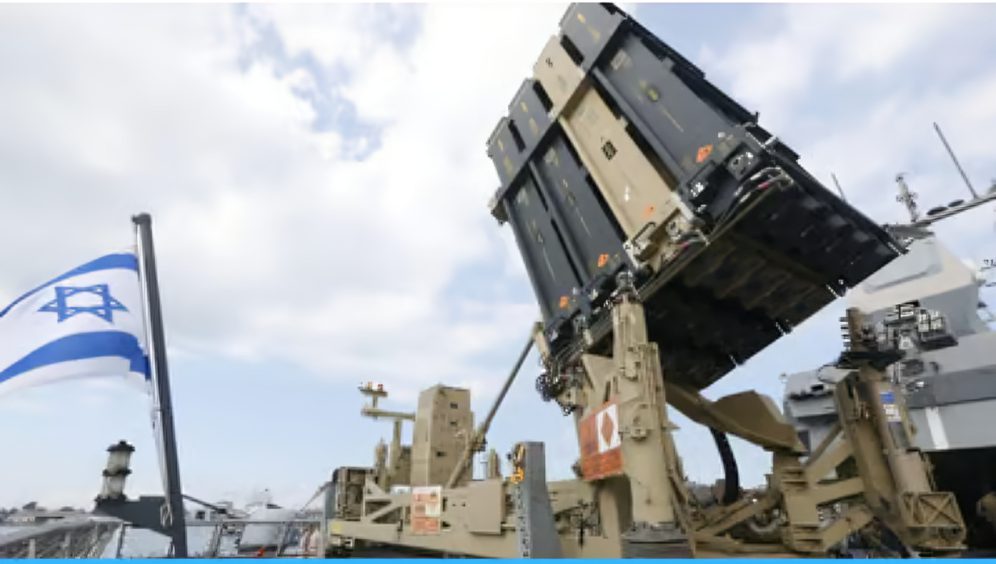Israel’s Iron dome Missile shield
The Iron Dome missile shield has proven to be a game-changer in Israel’s defense system, intercepting and neutralizing incoming rockets with astounding accuracy. In this article, we will delve into the inner workings of this remarkable defense mechanism that has protected countless lives and brought a sense of security to the people of Israel.
The Origins of Iron Dome
The Iron Dome system was developed by Rafael Advanced Defense Systems, an Israeli defense technology company, in response to the escalating threat of rocket attacks from neighboring territories. Its primary aim was to provide an effective defense against short-range rockets and artillery shells that pose a significant risk to civilian populations.
The Three Key Components
To fully grasp how the Iron Dome operates, it is essential to understand its three core components:
- Radar System:
The first line of defense is the highly advanced radar system that detects incoming projectiles. The radar tracks and identifies the path, trajectory, and speed of the threats, relaying the information to the command and control center.
- Battle Management & Control Unit:
The second component of Iron Dome is the Battle Management & Control Unit. This unit analyzes the data received from the radar system, calculates the estimated impact points, and determines if a rocket poses a threat to populated areas. It then decides whether to activate the interception process.
- Interceptor Missiles:
The final component is the heart of the system – the interceptor missiles. These advanced projectiles are specifically designed to intercept and destroy incoming rockets mid-air, preventing them from causing any harm on the ground. Each interceptor, known as the Tamir missile, is equipped with sophisticated technology that allows it to precisely engage and destroy its target.
The Intercept Process
When an incoming rocket is detected and identified as a potential threat, the Iron Dome system initiates the intercept process. Let’s take a closer look at the steps involved:
Step 1: Detection and Tracking
As soon as a rocket is launched, the radar system picks up its trajectory, initiating the detection and tracking process. The radar follows the projectile’s path, providing continuous updates to the Battle Management & Control Unit.
Step 2: Threat Evaluation
The Battle Management & Control Unit analyzes the data received from the radar, evaluating the trajectory, speed, and destination of the incoming rocket. It employs a sophisticated algorithm to assess the potential threat to populated areas.
Step 3: Decision and Firing
Based on the threat evaluation, the Iron Dome system decides whether to initiate an interception. If the rocket is deemed to pose a danger to populated regions, the Battle Management & Control Unit orders an interceptor missile to be launched.
Step 4: Mid-Air Collision
Once the decision is made, the interceptor missile is fired directly toward the incoming rocket. Using its onboard sensors, the Tamir missile adjusts its course to accurately intercept the target in mid-air. The collision between the interceptor and the incoming rocket neutralizes the threat.
Step 5: Safety and Debris
The Iron Dome system prioritizes the safety of civilians by intercepting rockets over open, unpopulated areas whenever possible. This helps minimize the risk of falling debris harming people on the ground.
Notable Achievements
Since its deployment, Iron Dome has demonstrated extraordinary effectiveness, saving countless lives and protecting critical infrastructure. Here are some notable achievements:
- The interception success rate of the Iron Dome is estimated to be around 90%, making it one of the most reliable missile defense systems in the world.
- During the conflict with Hamas in 2014, Iron Dome intercepted approximately 1,500 rockets, preventing large-scale casualties.
“Iron Dome’s cutting-edge technology has brought a new level of defense to the people of Israel, ensuring their safety and providing peace of mind.” – Defense Expert, Dr. Nathan Cohen.
Conclusion
In an era where rocket threats are a harsh reality, Israel’s Iron Dome has pioneered a new frontier in missile defense. By seamlessly integrating radar systems, a battle management unit, and interceptor missiles, Iron Dome has proven its capability to neutralize incoming projectiles with exceptional accuracy. The success of Iron Dome not only showcases Israel’s dedication to protecting its citizens but also sets a remarkable example of technological innovation for the rest of the world.
Check out more Blogs: Technology




